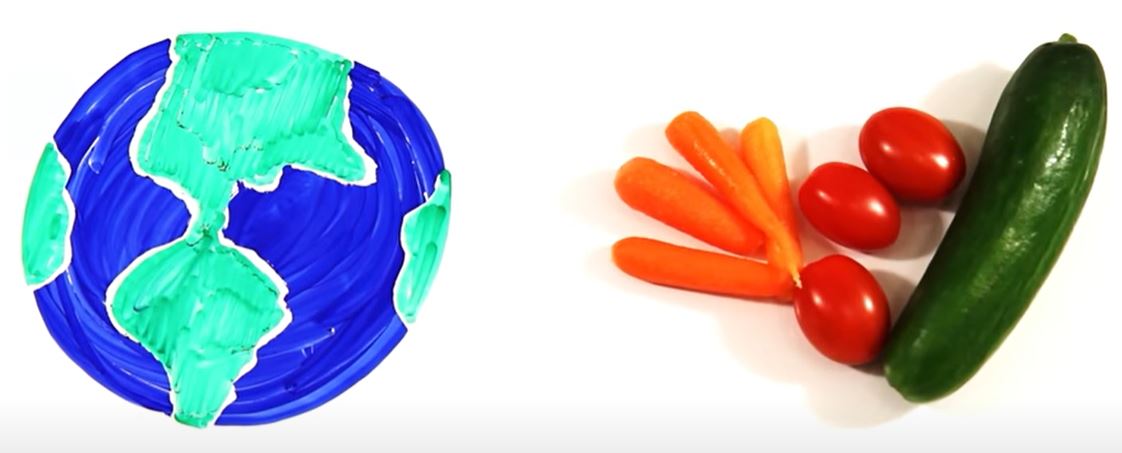Chances are you or someone you know is vegetarian – so we thought we’d try a thought experiment. What would happen if everyone in the world was suddenly a vegetarian? What effect would it have on our lives and the planet? Before we begin, full disclosure: none of us at AsapSCIENCE are vegetarians.
And the worldwide rate of vegetarianism is fairly low, ranging from about 4-5% in the US and Canada to a little over 30% in India. As a result, there are currently about 20 billion chickens, 1.5 billion cows, over a billion sheep and nearly a billion pigs in the world.
Without any meat-eating humans to provide a market, whole herds of domestic animals would disappear. And this would free up vast quantities of land. About 33 million square kilometres of land are used for pasture – an area about the size of Africa.
And that’s not even counting the land used to grow crops exclusively for animal feed. Some of it would be needed for the increased amount of vegetable crops, but much of the land currently used as pasture is actually too dry to grow crops.
Without humans adding artificial nutrients, this land could turn to desert, but if properly managed, it’s possible that some farmland would return to its natural state of grassland or forests, which could help counteract global climate change.
After all, the loss of CO2-absorbing trees cleared for agriculture is a major reason why global levels of CO2 are going up. Cows and other grazers also affect our climate through large amounts of methane production, which has 25 times more potential planet-warming power than CO2.
Combined with the loss of forests and other effects, livestock production is responsible for about 15% of global greenhouse gas emissions, which is more than all the world’s planes, trains and automobiles put together.
In fact, many scientists believe that reducing meat consumption may be one of the best strategies for managing climate change. A vegetarian diet would also greatly reduce water consumption; around 70% of global freshwater consumption is used in agriculture.
It takes 15,000 litres to make a kilogram of beef, 6,000 L for pork and 4,000 L for chicken – Compare this with 1,600 L for cereal crops, 900 L for fruit and 300 L for garden vegetables. Of course a kilogram of meat packs many more calories than an equivalent weight of fruit, but even if you compare the ratio of water per calorie of available food energy, beef is still 5 times more water intensive than fruit, 7 times more than veggies and 20 times more than cereal.
So are there any downsides to a vegetarian diet? Well, we’d be left without a cheap source for many byproducts of livestock, like leather from animal hides, or animal fats which are used in cosmetics, candles and detergents.
And while vegetable based alternatives do exist, their production would need to increase, meaning more land dedicated to growing crops and less restored to its natural state. A more complicated fact is that raising and processing animals is a full-time job for more than 1 billion people – most of whom are small-scale farmers in the developing world.
While some may be able to move to producing milk or eggs, or even growing vegetable crops, many would be faced with their way of life becoming obsolete. Of course, any increase in vegetarianism is likely to be a gradual process rather than a sudden cut-off.
And, surprisingly, the trends are actually in the opposite direction; in places like India and China, people are becoming wealthier, and as a result, consuming more meat which effectively cancels out the declines we see in other countries.
So, we actually tried to go vegetarian for 21 days straight as an experiment in our new AsapTHOUGHT episode. Check out the video if you want to see how it went, what we learned in the process and how we felt about it! And subscribe for more weekly science videos!
